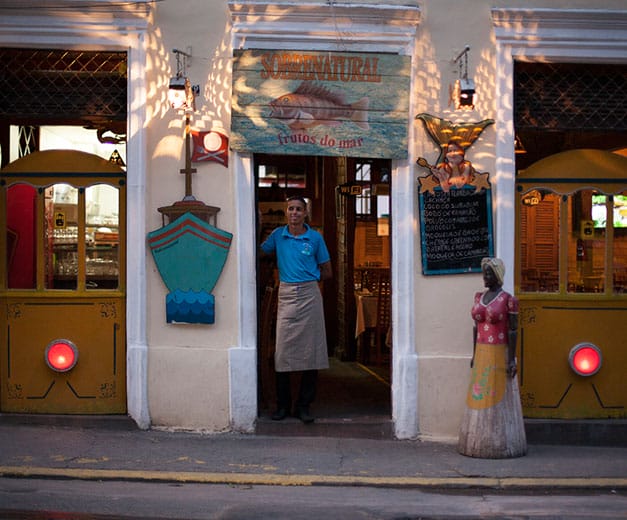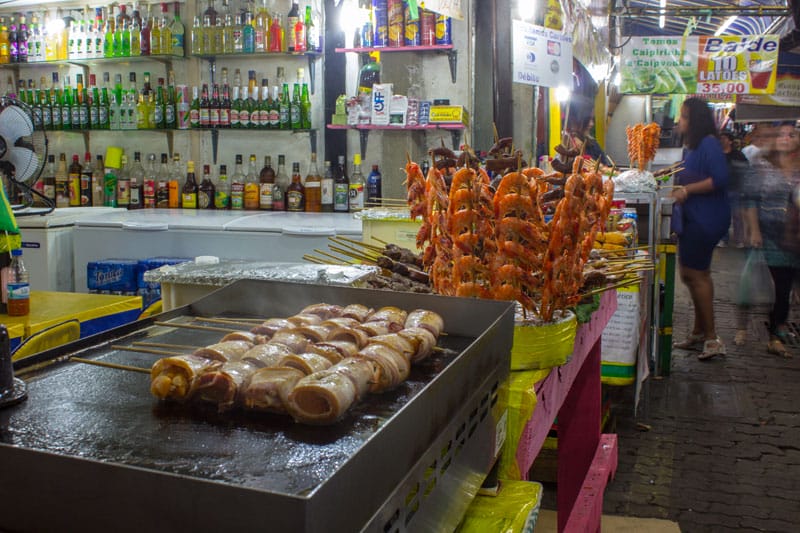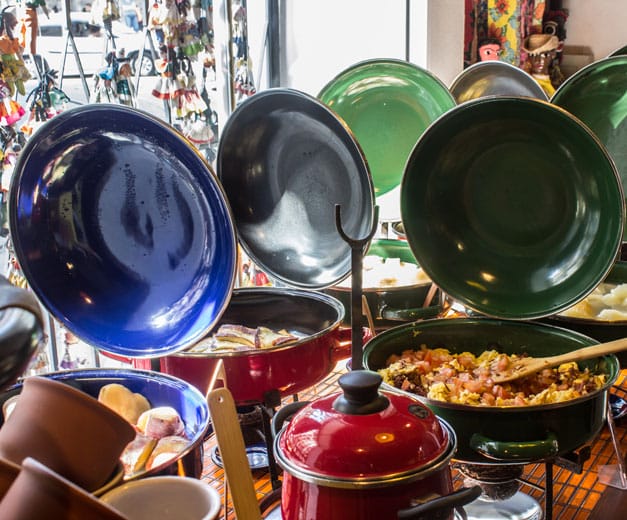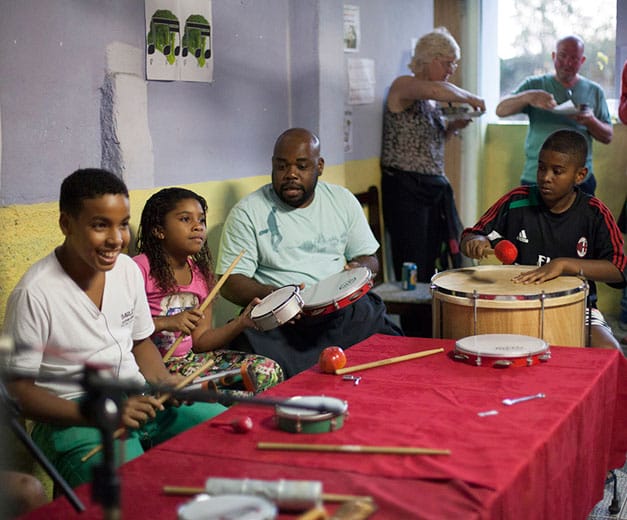With 4,500 miles of coastline, the world’s largest river by volume (the Amazon), more than 10,000 miles of waterways and the largest amount of fresh water on the planet, Brazil suffers from a certain gastronomical misperception. Yes, this is a country that loves beef, prominently on display in popular Brazilian churrascarias. But it very well may be a country of fish, which are more varied and more accessible than cattle in many of the country’s most flavorful regional cuisines.
Sérvula Amado, an exuberant lover of fish, Afro-Brazilian flavors and samba, brings the best each has to the tables and pavement floor of Sobrenatural. In Rio’s bohemian hillside neighborhood of Santa Teresa, Amado has created a top-notch fish restaurant with more than a dozen seafood options in an ambiance that feels like a cross between a breezy beachside hut and cheesy cruise ship.
Amado opened Sobrenatural 23 years ago after she was forced to shut her samba bar in Irajá, a working-class neighborhood along Rio’s industrial Avenida Brasil. An exuberant and stylish woman, she counts Brazil’s most famo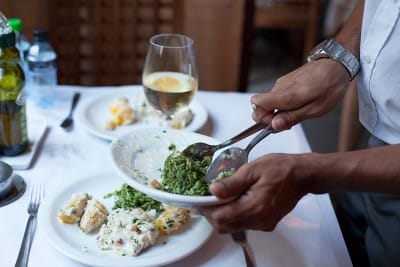 us samba performers, from Zeca Pagodinho to the now-deceased Mestre Marçal, among her friends. They are also often performers at Sobrenatural; there’s live music on Monday and Tuesday evenings. Her uncles played with Pixinguinha, an Afro-Brazilian saxophonist from the early 20th century who is considered one of the greatest composers of Brazilian popular music.
us samba performers, from Zeca Pagodinho to the now-deceased Mestre Marçal, among her friends. They are also often performers at Sobrenatural; there’s live music on Monday and Tuesday evenings. Her uncles played with Pixinguinha, an Afro-Brazilian saxophonist from the early 20th century who is considered one of the greatest composers of Brazilian popular music.
“I started a roda de samba that blew up. It came out in all the papers. The buses couldn’t pass by here,” she says of Sobrenatural’s early years. Local officials banned the samba because of the disturbance it made, which meant that it moved to a more contained space inside. For being a restaurateur, Amado identifies more as being “from a family of musicians,” and it’s unclear whether she sees Sobrenatural as a stage with food or vice versa. “Where there is food, there is music,” she says.
The best approach to Amado’s Afro-Brazilian menu is to first think of the dish and then choose the fish to go in it. Her moqueca is done in the capixaba style – i.e. in the style of the state of Espírito Santo – meaning it has coconut milk but is made without palm oil, as in other versions of the dish. A bobô, traditionally eaten with shrimp, is creamy manioc root with palm oil and coconut milk. The escondidinho is something like a pot pie, though made with manioc and filled with white cheese.
We encourage you to go beyond the seafood options that will be familiar to any beach-going tourist and try dishes like the white fish surubim from Pará state, the border area between B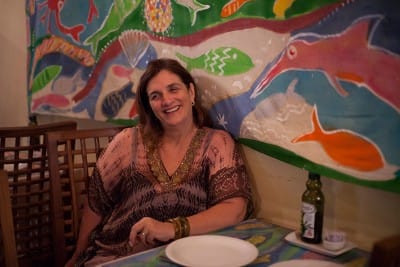 razil’s north and Amazon region, and the very popular namorado (“boyfriend”), which comes from tropical saltwater regions. Some of the peixes are all but impossible to find on Rio menus, like congro rosa, an ugly-faced fish that looks like a large tadpole and lives off Brazil’s coastline, and badejo, or whiting. Amado also offers sides such as creamy batata baroa, or potatoes, and banana da terra, cooked plantains, Brazil nuts and rice with shrimp and cupuaçú, a smooth, yellow, pulpy Amazonian fruit that quickly wins converts.
razil’s north and Amazon region, and the very popular namorado (“boyfriend”), which comes from tropical saltwater regions. Some of the peixes are all but impossible to find on Rio menus, like congro rosa, an ugly-faced fish that looks like a large tadpole and lives off Brazil’s coastline, and badejo, or whiting. Amado also offers sides such as creamy batata baroa, or potatoes, and banana da terra, cooked plantains, Brazil nuts and rice with shrimp and cupuaçú, a smooth, yellow, pulpy Amazonian fruit that quickly wins converts.
A high-energy woman clearly proud of the music and fish joint that’s now a city-wide reference for both samba and Afro-Brazilian cuisine, Amado says even her personal life is bound up in her cooking. “I met my husband in a fish market.”
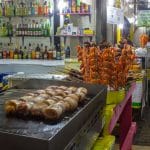 August 16, 2016 Feira de São Cristóvão
August 16, 2016 Feira de São Cristóvão
Let’s say you have only two or three days in Rio. You want to experience a little real […] Posted in Rio February 5, 2015 Café do Alto
February 5, 2015 Café do Alto
Until a few years ago, breakfast eateries were not very common in Rio. Cariocas would […] Posted in Rio December 2, 2014 Curry Club
December 2, 2014 Curry Club
In the 1920s, Brazilian artists and writers published the Antropofagia Manifesto. They […] Posted in Rio
Published on November 22, 2013
Related stories
August 16, 2016
RioLet’s say you have only two or three days in Rio. You want to experience a little real Brazilian culture and don’t want to restrict yourself to the obvious tourist stops, overhyped bars and restaurants or usual “gringo” nightlife spots. Our recommendation? Spend a night or day – or both, even – at Feira de…
February 5, 2015
RioUntil a few years ago, breakfast eateries were not very common in Rio. Cariocas would have breakfast at home or at a bakery, while tourists had to make do with the always-boring "Continental breakfast" offered at hotels. But thankfully, everything has changed. Today, it's easy to find an excellent Brazilian breakfast, especially in South Zone…
December 2, 2014
RioIn the 1920s, Brazilian artists and writers published the Antropofagia Manifesto. They were unconvinced by the way the Brazilian elite – in a show of low national self-esteem – attempted to deferentially imitate European and U.S. culture. The writers instead proposed a “cultural cannibalism,” a “devouring” of imported cultural expressions that would be chewed up and “reelaborated…







































